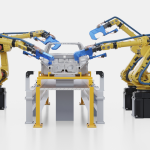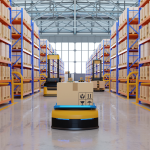A new global survey report from NTT DATA reveals that manufacturers are moving quickly to integrate generative AI into core operations, with supply chain and inventory management emerging as top focus areas. While 95% of leaders report measurable gains in efficiency and profitability, the findings also expose critical shortfalls in infrastructure, talent, and governance that could undermine long-term progress.
AI Adoption Accelerates in Manufacturing
Generative AI (GenAI) is no longer a future-state aspiration for manufacturing, it’s in active use and already reshaping core functions, particularly in supply chain and inventory management. In a new global report from NTT DATA, 95% of manufacturing leaders say GenAI is improving both efficiency and the bottom line, while 91% believe combining GenAI with digital twins will enhance asset performance and bolster supply chain resilience.
Based on a survey of more than 500 decision-makers across 34 countries, the study identifies the top GenAI applications – supply chain planning, inventory optimization, knowledge management, and quality control. These are not marginal wins. For supply chain directors, GenAI is increasingly becoming a key lever for tackling volatility, improving demand planning, and optimizing throughput.
According to the survey report, 91% of respondents believe combining GenAI with digital twins will enhance asset performance and supply chain resilience, while 94% see significant potential in integrating IoT/edge data into AI models to increase predictive accuracy and decision relevance.
“AI is streamlining processes and redefining what’s possible,” said Prasoon Saxena, Co-Lead of Products Industries at NTT DATA in an official statement. “GenAI helps organizations achieve flexibility in fast-changing business environments, especially in the face of uncertain tariff policies worldwide.”
A separate survey by The Access Group found that 57% of UK manufacturing employees are already using AI tools like ChatGPT in their day-to-day roles. An overwhelming 93% report positive impacts, ranging from reduced workloads to improved productivity. That organic uptake shows real-world momentum, but it also underscores the need for senior leaders to catch up with how AI is actually being used on the ground.
Enthusiasm Meets Operational Reality
While the benefits are clear, manufacturers still face structural and strategic hurdles. A staggering 92% admit that legacy systems are obstructing GenAI progress, yet fewer than half have conducted infrastructure readiness assessments. This disconnect poses a risk that without foundational upgrades to data systems and cloud environments, AI initiatives may remain stuck at the pilot stage.
Talent is another weak link. Two-thirds of respondents say their workforce lacks the skills needed to use GenAI effectively, potentially limiting both the scope and speed of adoption. Only 41% strongly agree they have sufficient storage and compute capacity to support AI workloads, revealing deeper concerns about scalability.
Even where technology and talent align, governance often lags. Less than half of manufacturing leaders say their organization follows a robust ethical framework to manage AI use. Without such guardrails, companies expose themselves to compliance, privacy, and reputational risks as AI tools grow more embedded in decision-making.
As Saxena pointed out: “The most successful manufacturing organizations have already integrated GenAI into essential operations. Companies failing to plan, deploy, and govern GenAI strategically will not only have a problem—they may be planning to fail.”
GenAI in Manufacturing: Moving from Hype to Execution
There’s no doubt GenAI is beginning to reshape how manufacturers think about efficiency, resilience, and responsiveness, particularly in the supply chain domain. The technology is showing clear value in areas like inventory management, predictive maintenance, and demand forecasting. But the NTT DATA findings also serve as a quiet warning that early enthusiasm isn’t the same as long-term readiness.
The challenge now lies in turning experimentation into structure. This means carefully evaluating infrastructure capabilities, understanding where skills gaps exist, and establishing governance that is both practical and future-facing. GenAI may accelerate many processes, but its integration needs to be steady, informed, and disciplined.







